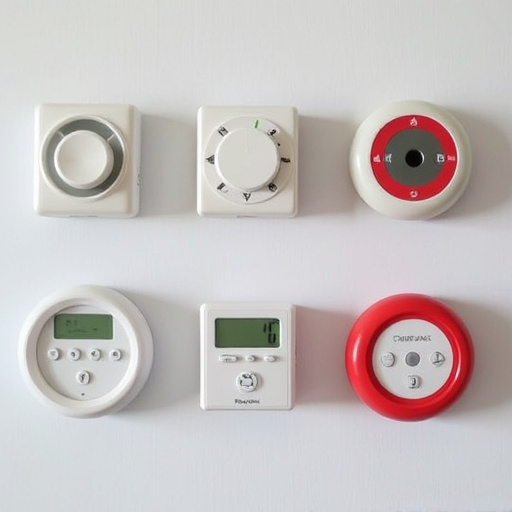Wearable emergency devices provide a discreet yet powerful solution for personal safety, using advanced sensors to detect emergencies and send silent alerts via maximum decibel personal alarms (exceeding 100 dB) to ensure quick help without compromising privacy. These devices offer peace of mind for individuals with health conditions or those seeking safe travel options in diverse environments, from bustling public spaces to quiet homes, while maintaining discretion through customizable decibel levels.
In today’s fast-paced world, ensuring personal safety is paramount. Wearable emergency devices with silent alerts offer a discreet yet powerful solution, allowing users to communicate distress signals without drawing attention. This article delves into the crucial role of these devices in enhancing personal safety, focusing on their key features and benefits. We’ll explore maximum decibel levels to ensure alarms are heard, along with technology integrations that foster peace of mind.
- Understanding Wearable Emergency Devices: Their Role in Personal Safety
- Silent Alerts: A Discreet Yet Powerful Feature
- Maximum Decibel Levels: Ensuring Alarms Are Heard
- Integrating Technology for Enhanced Safety and Peace of Mind
Understanding Wearable Emergency Devices: Their Role in Personal Safety
Wearable emergency devices are life-saving tools designed to ensure personal safety in critical situations. These compact gadgets, often in the form of sleek and stylish accessories, offer a unique advantage by providing silent alerts and personal alarms with maximum decibel output. Their primary role is to empower individuals, especially those who frequently engage in outdoor activities, travel alone, or have specific health conditions, to seek help discreetly and effectively.
These devices are equipped with advanced sensors and connectivity features that detect emergencies, such as falls, accidents, or medical crises, and automatically send alerts to pre-selected contacts or emergency services. The silent alert feature ensures discretion without drawing unnecessary attention in situations where privacy and calmness are vital. With a simple press of a button or automatic activation, these wearables can provide peace of mind, knowing that help is just a button press away, all while maintaining maximum decibel levels to ensure the message gets through.
Silent Alerts: A Discreet Yet Powerful Feature
Silent alerts are a game-changer in wearable emergency devices, offering a discreet yet powerful feature that can save lives. Unlike traditional alarms that rely on loud noises to attract attention, silent alerts use subtle vibrations or gentle pulses to signal distress without alerting nearby individuals or potentially drawing unwanted attention. This is particularly useful in situations where discreetness is crucial, such as when facing an unexpected attack or attempting to escape a dangerous location unnoticed.
Wearable devices with silent alerts can emit signals at maximum decibel levels designed for personal safety, ensuring that the wearer receives an immediate warning without compromising their privacy or safety strategy. This feature allows users to take quick action, enabling them to communicate their location and distress signal effectively while maintaining a low profile. In today’s world, where unexpected hazards can arise in bustling environments, silent alerts provide a vital tool for personal safety, empowering individuals with the ability to respond swiftly and discreetly.
Maximum Decibel Levels: Ensuring Alarms Are Heard
When designing wearable emergency devices, one critical consideration is the maximum decibel level of the alarms to ensure they are heard in various environments and conditions. Personal alarm safety relies on loud, attention-grabbing sounds to alert bystanders and potentially deter harm. Devices should be equipped with alarms that surpass 100 decibels (dB) to meet industry standards for maximum effectiveness. This volume ensures that even in noisy public spaces or during sleep, the alert is distinctive and noticeable.
Different scenarios require varying levels of intensity. For instance, a personal alarm designed for outdoor activities should have a higher dB rating than one meant for home use. This consideration guarantees that users receive immediate attention when needed, enhancing their safety during emergencies.
Integrating Technology for Enhanced Safety and Peace of Mind
Integrating technology into wearable emergency devices has revolutionized personal safety and peace of mind, especially in situations where loud sounds could be detrimental or inappropriate. These innovative gadgets go beyond traditional blaring alarms, utilizing silent alerts to discreetly signal for help when needed. Advanced features such as customizable maximum decibel levels ensure users can set the sensitivity according to their preferences and surrounding environments, offering a subtle yet effective safety net.
With silent alerts, wearers can rest assured that assistance will be summoned without causing a scene or drawing unnecessary attention. This is particularly advantageous in quiet spaces like hospitals, homes, or during outdoor activities where loud noises may disrupt others or the natural environment. By embracing these technological advancements, individuals can enhance their personal alarm safety while maintaining discretion and preserving sensitive situations.
Wearable emergency devices with silent alerts represent a significant advancement in personal safety, offering discreet yet powerful protection. By ensuring maximum decibel levels in alarms, these devices provide peace of mind, knowing help can be summoned silently and effectively. Integrating technology seamlessly, they enhance our ability to navigate potential dangers, making them indispensable tools for anyone prioritizing personal alarm safety.
